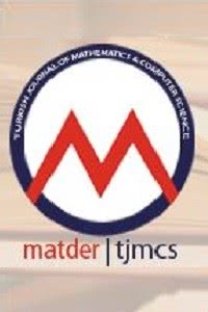Modeling Covid-19 Infection Cases and Vaccine in 5 Countries Highly Vaccinations
ARIMA, BATS, COVID-19, Holt’s Linear, TBATS,
___
- [1] Abotaleb, M.S.A., Predicting COVID-19 cases using some statistical models: An application to the cases reported in China Italy and USA, Academic Journal of Applied Mathematical Sciences, 6(4)(2020), 32–40. doi.org/10.32861/ajams.64.32.40.
- [2] Abotaleb, M.S.A., Makarovskikh, T., The Research of Mathematical Models for Forecasting Covid-19 Cases, In: Strekalovsky A., Kochetov Y., Gruzdeva T., Orlov A. (eds) Mathematical Optimization Theory and Operations Research: Recent Trends. MOTOR 2021. Communications in Computer and Information Science, vol 1476. Springer, Cham., 2021. https://doi.org/10.1007/978-3-030-86433-0_21.
- [3] Abotaleb, M.S.A., Makarovskikh, T.A., Development of algorithms for choosing the best time series models and neural networks to predict COVID-19 cases, Bulletin of the South Ural State University. Ser. Computer Technologies, Automatic Control, Radio Electronics, 21(3)(2021), 26-–35. DOI:10.14529/ctcr210303.
- [4] Abotalebi, M., Makarovskikh, T., System for forecasting COVID-19 cases using time-series and neural networks models, Engineering Proceedings, 5(1)(46)(2021). https://doi.org/10.3390/engproc2021005046.
- [5] Bubar, K.M., Reinholt, K., Kissler, S.M., Lipsitch, M., Cobey, S. et al., . Model-informed COVID-19 vaccine prioritization strategies by age and serostatus, Science, 371(6532)(2021), 916–921.
- [6] Chatfield, C.A., The Analysis of Time Series: An Introduction, R. CRC Press, 2019.
- [7] De Livera, A.M., Hyndman, R.J., Snyder, R.D., Forecasting time series with complex seasonal patterns using exponential smoothing, Journal of the American Statistical Association, 106(496)(2011), 1513–1527.
- [8] Frain, J., Lecture Notes on Univariate Time Series Analysis and Box Jenkins Forecasting, Economic. Research and Publications, 1992.
- [9] Holt, C.E., Forecasting Seasonals and Trends by Exponentially Weighted Averages (ONR Memorandum No. 52), Carnegie Institute of Technology, Pittsburgh USA, 1957.
- [10] Sardar, I., Karakaya, K., Makarovskikh, T., Abotaleb, M., Hussain, S.A. etal., Machine learning-based Covid-19 forecasting: Impact on Pakistan stock exchange, International Journal of Agricultural and Statistical Sciences, (2021). DocID:https://connectjournals.com/03899.2021.17.53.
- [11] Kirchgassner, G.J., Introduction to Modern Time Series Analysis, Springer Science & Business Media, 2012.
- [12] Makarovskikh, T.A., Abotaleb, M.S.A., Automatic selection of ARIMA model parameters to forecast COVID-19 infection and death cases, Bulletin of the South Ural State University. Series: Computational Mathematics and Software Engineering,10(2)(2021), 20-–37.(in Russian) DOI:10.14529/cmse210202.
- [13] Makarovskikh, T., Abotaleb, M., Comparison Between Two Systems for Forecasting Covid-19 Infected Cases. In: Byrski A., Czach´orski T., Gelenbe E., Grochla K., Murayama Y. (eds). Computer Science Protecting Human Society Against Epidemics. ANTICOVID 2021. IFIP Advances in Information and Communication Technology, vol 616. Springer, Cham., 2021. https://doi.org/10.1007/978-3-030-86582-5_10.
- [14] Mishra, P., Fatih, C., Rawat, D., Sahu, S., Pandey, S.S.et al., Trajectory of COVID-19 data in India: Investigation and project using artificial neural network, Fuzzy Time Series and ARIMA Models, Annual Research & Review in Biology, 35(9)(2020), 46–54.
- [15] Mishra, P., Al Khatib, M.G., Sardar, I. et al., Modeling and forecasting of sugarcane production in India, Sugar Tech., 23(2021), 1317—1324 . https://doi.org/10.1007/s12355-021-01004-3.
- [16] Mishra, P., Matuka, A., Abotaleb, M.S.A., Weerasinghe, W.P.M.C.N., Karakaya, K. et al., Modeling and forecasting of milk production in the SAARC countries and China, Modeling Earth Systems and Environment, (2021), 1–13.
- [17] Mohammed, J., Khatib, A.M., Mishra, P., Adjei, P., Singh, P.K. et al., Modeling and forecasting of Covid-19 from the context of Ghana, African Review of Economics and Finance, (2020), 1–18.
- [18] Rostami-Tabar, B., Rendon-Sanchez, J.F., Forecasting COVID-19 daily cases using phone call data, Applied Soft Computing, 100(2021), 106932.
- [19] Seale, H., Heywood, A.E., Leask, J., Sheel, M., Durrheim, D. N. et al., Examining Australian public perceptions and behaviors towards a future COVID-19 vaccine, BMC Infectious Diseases, 21(1)(2021), 1–9.
- [20] Tekindal, M.A., Yonar, H., Yonar, A., Tekindal, M., Çevrimli, M.B. et al., Analyzing COVID-19 outbreak for Turkey and eight country with curve estimation models, Box-Jenkins (ARIMA), Brown linear exponential smoothing method, autoregressive distributed lag (ARDL) and SEIR Models, Eurasian J Vet Sci, Covid-19 Special Issue, 142–155.
- [21] Yonar, H., Yonar, A., Tekindal, M. A., Tekindal, M., Modeling and forecasting for the number of cases of the COVID-19 pandemic with the curve estimation models, the Box-Jenkins and exponential smoothing methods, EJMO, 4(2)(2020), 160–165.
- [22] Young, W.L., The Box-Jenkins approach to time series analysis and forecasting: principles and applications, RAIRO-Operations Research-Recherche Op´erationnelle, 11(1977), 129–143.
- ISSN: 2148-1830
- Yayın Aralığı: Yılda 2 Sayı
- Başlangıç: 2013
- Yayıncı: MATEMATİKÇİLER DERNEĞİ
(k,m)-type Slant Helices According to Parallel Transport Framein Euclidean 4-Space
Password Attack Analysis Over Honeypot Using Machine Learning Password Attack Analysis
Birkan ALHAN, Mehmet Ali BARIŞKAN, Gökçe KARACAYILMAZ, Serkan Gönen, Ercan Nurcan YILMAZ, Hatice Beyza Taşçı
Hermite-Hadamard Type Inequality for s-Convex Functions in the Fourth Sense
Naime DEMİRTAŞ, Orhan DALKILIÇ
Some Characterizations of Spherical Indicatrix Curves Generated by Flc Frame
Süleyman ŞENYURT, Kebire Hilal AYVACI, Davut CANLI
SÜLEYMAN ŞENYURT, Kebire Hilal AYVACI, Davut CANLI
Mostafa ABOTALEB, Tatiana MAKAROVSKİKH, Harun YONAR, Pradeep MİSHRA, Amr BADR, KADİR KARAKAYA, Aynur YONAR
A Study of Para-K\"{a}hler-Norden Structures on Cotangent Bundle with The New Class of Metrics
Abderrahim ZAGANE, Zagane MOHAMMED
Singular Minimal TranslationSurfaces in Euclidean Spaces Endowed with Semi-symmetric Connections
